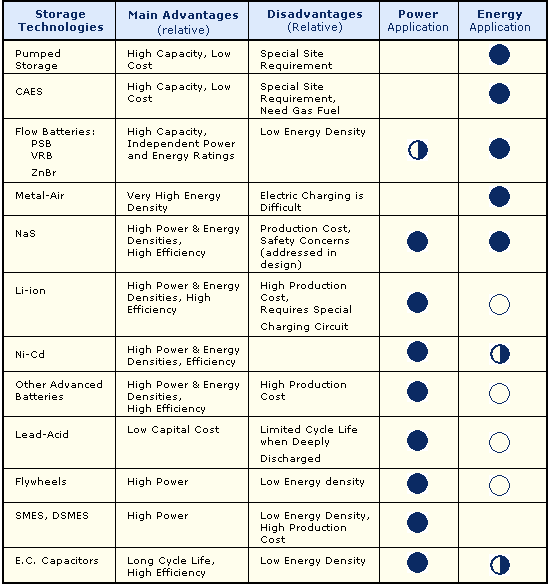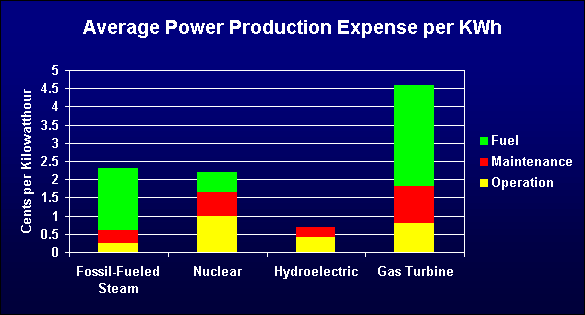

 Fossil Fuels
Fossil Fuels
 especially solar. Need to store the
excess energy when the collector system is being irradiated
especially solar. Need to store the
excess energy when the collector system is being irradiated
 Generating stations operate more efficiently
if they run at constant output level
Generating stations operate more efficiently
if they run at constant output level  want to shove unused
energy to a storage system and recover it later at times of peak
demand.
want to shove unused
energy to a storage system and recover it later at times of peak
demand.
 14
14
 0.04
0.04
 0.3 (per cubic meter)
0.3 (per cubic meter)
 0.05
0.05
 0.2
0.2
 0.9
0.9
 38
38
 2 (per cubic meter)
2 (per cubic meter)
Energy density storage drives the choices that can be made:
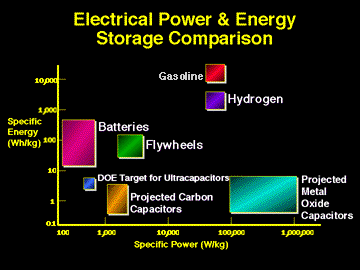
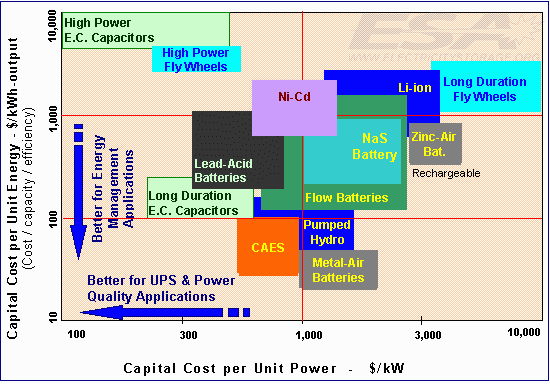
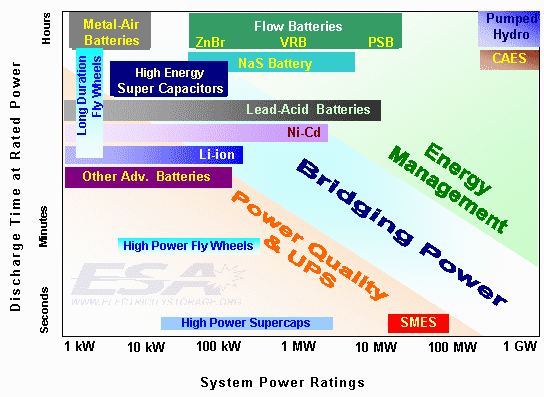
Pumped Hydroelectric Energy Storage:
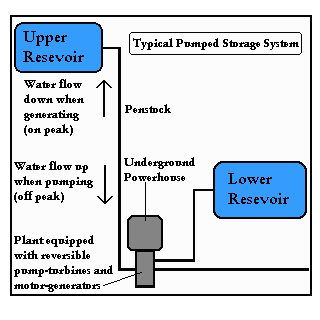

 use excess energy to pump water uphill
use excess energy to pump water uphill
 pump from lower reservoir (natural or artifical) to upper
reservoir.
pump from lower reservoir (natural or artifical) to upper
reservoir.
Energy recovery depends on total volume of water and its height above the turbine
 this is a stringent limit
on locations
this is a stringent limit
on locations
 can achieve higher energy density due to large vertical distance
(up to 1000 feet!)
can achieve higher energy density due to large vertical distance
(up to 1000 feet!)
Cost Issues:
Suppose a company has a coal fired plant which operates at 36% efficiency and uses excess power to pump water uphill. The overall efficiency of recovering that to deliver to the consumer is 0.36 x 0.64 = 0.23 (23%)
 what's the incentive?
what's the incentive?
Real Life Facility in Michigan
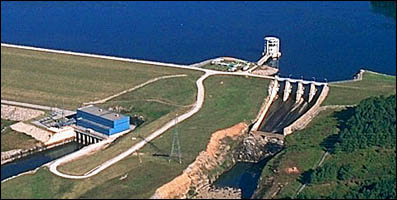
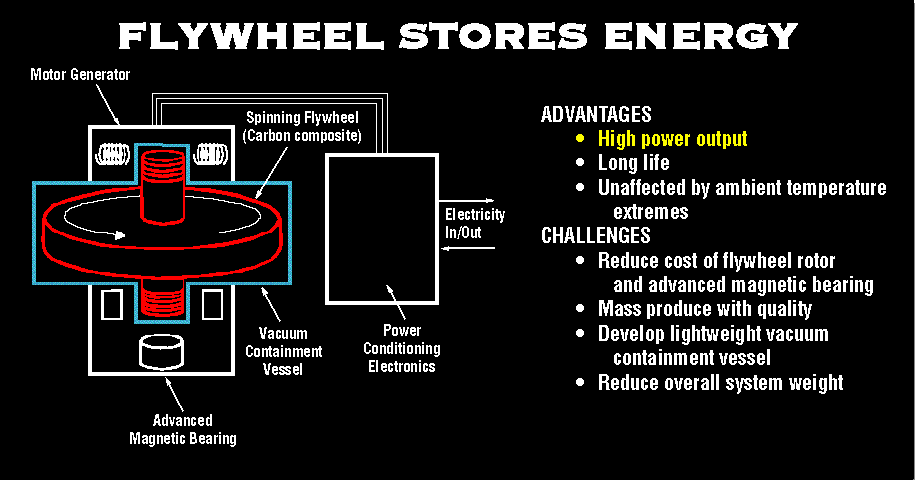
A flywheel, in essence is a mechanical battery - simply a mass rotating about an axis. Flywheels store energy mechanically in the form of kinetic energy. They take an electrical input to accelerate the rotor up to speed by using the built-in motor, and return the electrical energy by using this same motor as a generator.Flywheels are one of the most promising technologies for replacing conventional lead acid batteries as energy storage systems.
So, in other words. During times that your
generating more power than you need, you can spin the fly wheel up,
so to speak. When you need to recover that energy, you let the fly wheel
spin down.
To optimize the energy-to-mass ratio the flywheel needs to spin at
the maximum possible speed. This is because kinetic energy
only increases linerarly with Mass but goes as the square of
the rotation speed.
Rapidly rotating objects are subject to centrifugal forces that can
rip them apart.
Thus, while dense material can store more energy it is also subject
to higher centrifugal force and thus fails at lower rotation speeds
than low density material.
Tensile Strength is More important than density of material.
Long rundown times are also required Flywheels are about 80% efficient (like hydro)
Flywheels do take up much less land than pumped hydro systems
The model with the small yellow disc
tends to stop when the crank and
connecting rod are in a straight line
('dead' spots) - because sliding the
brass knob exerts no turning force on
the shaft.
In the model with the big yellow
flywheel, it is easy to keep the disc
turning, once it has started, due to the
effect of the flywheel.
The mass and the size of the big
flywheel helps resist the slowing down
of the model as it is turning.
Comparative Advantages/Disadvantages of high speed flywheels
Flow Batteries:
Excitement over flow batteries derives from their attributes, which combine aspects of conventional batteries and fuel cells. They are relatively
simple, efficient, scalable, durable, and can optimize either power or energy output, as desired. Flow batteries can respond in fractions of a second and can cycle rapidly and deeply at high or low power output with minimal battery degradation.
Flow batteries are scalable from a few watts and kilowatt-hours to tens or hundreds of megawatts and megawatt-hours.
Compressed Air:
Has high energy storage capacity compared to the alternatives.
About 10 times higher per cubic meter than water.
One example (in Germany) to date:
Ultracapacitors
ultracapacitors pack up to
100 times the energy of conventional
capacitors and deliver ten times the
power of ordinary batteries.
An application:
 frictionless bearings and
a vacuum to minimize air resistance can result in rundown times of
6 months
frictionless bearings and
a vacuum to minimize air resistance can result in rundown times of
6 months  steady supply of energy
steady supply of energy
 High tensile strength material allows it
to be rotated very fast without flying apart
High tensile strength material allows it
to be rotated very fast without flying apart
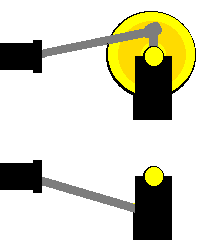
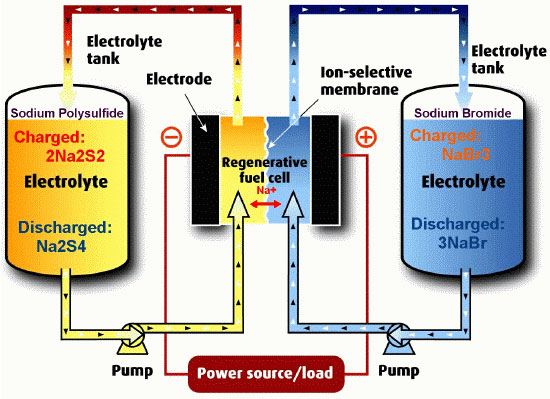
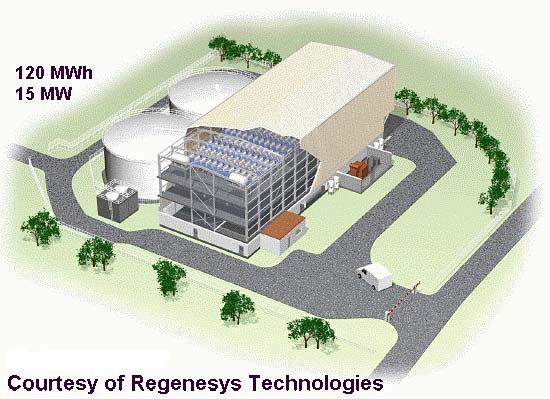
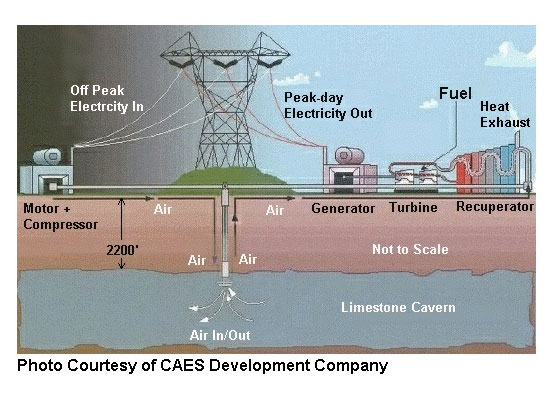
 this is a critical requirement (see below)
this is a critical requirement (see below)
 New Technology:
ultracapacitors are a new
energy storage technology ideally suited
for applications needing repeated bursts
of power for fractions of a second to
several minutes.
New Technology:
ultracapacitors are a new
energy storage technology ideally suited
for applications needing repeated bursts
of power for fractions of a second to
several minutes.
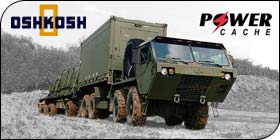
Energy Storage for Prototype Military Transport
Vehicle powered by Hybrid Electric Drive System
